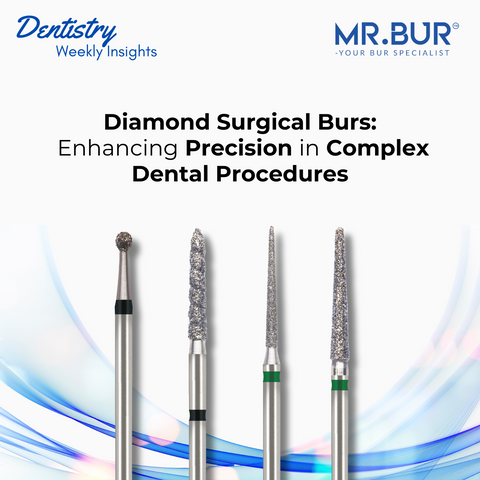Degranulation plays a crucial role in implantology, periodontal therapy, and other dental procedures where inflamed soft tissue needs to be removed to promote healing and create a healthy environment for bone regeneration or implants. However, degranulation failures can lead to poor clinical outcomes, including infections, compromised healing, and even implant loss. In this article, we explore the key factors that contribute to degranulation failure and provide practical tips on how to avoid these complications.
Understanding Degranulation in Dentistry
Degranulation is the process of removing granulation tissue—an inflammatory byproduct—during surgeries like implant placement, periodontal treatments, or cyst removal. The goal is to clean the surgical site thoroughly, eliminating all unnecessary soft tissues to allow for optimal healing, bone regeneration, and implant integration. However, when this procedure is not performed correctly, complications can arise.
1. Incomplete Removal of Granulation Tissue
One of the most common reasons for degranulation failure is the incomplete removal of granulation tissue.
Why It Happens:
Incomplete removal occurs when there is insufficient attention to detail or when improper tools are used. The presence of residual tissue can perpetuate inflammation and infection, stalling the healing process.
Clinical Consequences:
- Persistent inflammation
- Higher risk of infection
- Delayed bone regeneration
- Implant failure
Best Practices:
- Use the right tools: Utilizing high-quality, specialized burs like those from the Mr. Bur Degranulation Kit ensures precise and thorough removal of granulation tissue. These tools offer the added advantage of preserving surrounding bone structure, reducing the risk of complications.
- Detailed Inspection: After degranulation, a thorough inspection of the surgical site is vital. Utilize magnification tools to confirm complete tissue removal.
2. Improper Tools and Technique
Using inappropriate or dull instruments during degranulation can lead to inefficient tissue removal and unnecessary trauma to surrounding tissues.
Why It Happens:
Some practitioners use general-purpose burs that are not designed for the intricacies of soft tissue removal. Without precision tools, the degranulation process can become incomplete or cause undue damage to healthy structures.
Clinical Consequences:
- Trauma to surrounding bone or tissue
- Prolonged healing time
- Incomplete tissue removal leading to future complications
Best Practices:
- Opt for specialized tools: Diamond-coated degranulation burs from the Mr. Bur Degranulation Kit are highly recommended. These instruments allow for smooth, efficient cutting while minimizing trauma.
- Refine your technique: Always ensure controlled movements and follow a step-by-step approach, using appropriate irrigation to reduce heat buildup and tissue damage.
3. Failure to Achieve Primary Wound Closure
Primary wound closure is a critical aspect of post-degranulation healing. If not performed correctly, the wound may reopen or allow bacterial contamination.
Why It Happens:
Failure to achieve primary closure usually stems from tension in the wound or inadequate surgical technique. It can also occur if the degranulation area is too large, making closure difficult.
Clinical Consequences:
- Wound dehiscence (reopening)
- Bacterial contamination
- Delayed healing
Best Practices:
- Follow the PASS principle: Primary wound closure should be tension-free. Always ensure that the surrounding tissues are appropriately mobilized to cover the surgical site without strain.
- Prevent wound reopening: In cases where bone grafts are placed, make sure the graft doesn't create excess tension that could lead to wound dehiscence.
4. Inadequate Cooling or Irrigation
During degranulation, the tissue and bone can overheat due to friction from burs, especially when saline irrigation is not used appropriately.
Why It Happens:
Failing to use sufficient irrigation can cause overheating of the surgical site, leading to thermal damage to the tissue. This can slow healing or, in more severe cases, cause necrosis.
Clinical Consequences:
- Thermal damage to tissue
- Slower healing
- Potential tissue necrosis
Best Practices:
- Use constant irrigation: Ensure that saline water is continuously applied to cool the tissue during degranulation, especially when using high-speed instruments.
- Monitor for overheating: If you notice signs of heat buildup, reduce the instrument's speed and increase irrigation to maintain a stable temperature.
5. Poor Infection Control
Infections are a significant risk in any surgical procedure, particularly when granulation tissue is not fully removed or if the surgical site is contaminated.
Why It Happens:
Improper sterile techniques or insufficient attention to soft tissue management can introduce bacteria into the wound site.
Clinical Consequences:
- Post-operative infections
- Implant failure
- Prolonged recovery time
Best Practices:
- Strict sterile protocol: Always follow proper infection control procedures, including using sterile instruments and maintaining a clean surgical field.
- Remove all inflamed tissue: Ensure the complete removal of infected or inflamed tissues, as leaving behind even small amounts can promote infection.
6. Patient-Specific Factors
Some patient-specific factors, such as smoking, uncontrolled diabetes, or poor oral hygiene, can impair healing following degranulation procedures.
Why It Happens:
Patients with compromised immune systems or poor healing abilities are at a higher risk of post-operative complications, including infection and failed implant integration.
Clinical Consequences:
- Poor healing
- Increased risk of infection
- Implant failure
Best Practices:
- Patient education: Educate patients on maintaining good oral hygiene before and after the procedure. Encourage them to stop smoking and manage systemic conditions like diabetes to promote healing.
- Pre-procedural planning: Take a detailed medical history and, if necessary, delay the procedure until the patient is in a better state of health for optimal healing.
Conclusion: Ensuring Success in Degranulation Procedures
The success of a degranulation procedure depends on a combination of the right tools, proper technique, and meticulous attention to patient care. By addressing the key factors that contribute to degranulation failure—such as incomplete tissue removal, improper tools, or inadequate cooling—dental professionals can significantly improve their clinical outcomes.
Have you integrated the latest degranulation techniques into your practice? Explore our comprehensive range of degranulation tools and subscribe to stay updated with the latest in dental innovations.
For more insights into effective degranulation techniques, check out our previous blog post on The Critical Role of Degranulation in Dental Procedures (Achieving Predictable Outcomes in Implantology & Periodontal Care).
At MR.BUR United Kingdom, we pride ourselves on exceeding expectations and continually improving to meet the evolving needs of our customers.
Diamond Burs, Carbide Burs, Surgical & Lab Use Burs, Endodontic burs, IPR Kit, Crown Cutting Kit, Gingivectomy Kit, Root Planning Kit, Composite Polishers, High Speed Burs, Low Speed Burs
Subscribe our newsletter now!





